http://e-info.org.tw/node/116663
「吃」出島民未來 波多黎各靠農業重獲希望
文字大小
111 1 Share1
本報2016年6月29日綜合外電報導,范震華編譯;賴慧玲審校
羅薩達(Nelson Rosada)是個擁有28年廚藝資歷的廚師,他對自己曾經創造出許多美味佳餚感到自豪,但他認為,對比以往,現在他在波多黎各加勒比希爾頓飯店烹煮的菜色最為特別。因為這是他第一次能直接使用在地生產的新鮮食材,而不像其他地方得用從美國佛羅里達花數天船運過來的材料。
使用在地食材或許會是一位廚師贏得顧客青睞的小秘訣,反映的卻是這個美國境外領土上的農業復甦,也可能是幫助這個小島擺脫730億美元債務危機的方法之一。羅薩達說,「好事正在這塊土地上發生,還能讓錢留在波多黎各。我非常驕傲我的工作能支持波多黎各的重生。」
農業復甦之路
根據《英國衛報》報導,過去一個世紀以來,波多黎各的農業從興盛走向衰敗。1914年農業和食品生產相關活動占了波多黎各國內生產毛額(GDP)的70%,但在美國政府公布的2012年農業普查結果中,僅剩不到1%。波多黎各有超過100萬英畝的農地因轉作其它發展用途而流失,島上糧食自給率低迷,居民有85%的食物需要仰賴進口,使波多黎各農業部長帕淦(Myrna Comas Pagán)不得不用「嚴峻」來形容波多黎各的農業現況。
波多黎各是隸屬美國的自由邦,現為龐大債務所苦。圖為位在波多黎各西部城鎮馬里考的溫室,其內正培育咖啡等當地樹種。圖片來源:US Fish and Wildlife Service。(CC BY 2.0)
然而,隨著對在地食材需求的增加,加上聯邦政府提供的財政誘因,以及地方政府重新重視農業,近來有許多離鄉的波多黎各人回到島上定居。根據美國農業部(USDA)統計,超過 1700 個新農場在島上設立。不僅如此,有越來越多的農民、政治人物和分析家開始相信農業可以帶領這個島嶼走出困境。
目前,波多黎各重新開墾了3萬英畝廢棄耕地,使可耕地幾十年來首次成長到63萬英畝。對此,帕淦表示:「這是讓土地復原、改變人們的生活文化,讓農業再次長出生命力。我們正目睹新農民、新技術、和新農場誕生。自2011年起,波多黎各的農業收益成長了24%,總金額超過9億美元。」
農人們構築的產業新面貌
2015年時,佩德羅.卡薩斯和霍爾赫.卡薩斯兄弟(Pedro and Jorge Casas)向美國農業部的農場服務局(the Farm Service Agency of USDA) 貸款28萬美元,作為改建農場的部分費用。他們的農場位於首都近郊的山坡上,由兩個占地不大的溫室組成,卡薩斯兄弟在這裡以魚菜共生系統取代傳統農耕,魚的排泄物經過過濾系統後成為水耕作物的養分,兩個溫室裡種植著有機薄荷、香蔥、迷迭香和羅勒。
沒有任何農耕經驗的卡薩斯兄弟,自2011年開始投入農業後,農場的產量和收益不斷增加。他們也建立起一個持續成長的的農產配銷網絡,協助自家農場和島上幾十位農夫銷售產品,一起推動食物革命。
Jorge Casas。圖片來源:Agrohack臉書粉絲頁。
31歲的霍爾赫說,「農民通常不喜歡出去叫賣推銷,所以我們創造了一個『你來種我來賣』社群,每個農夫種植各自擅長的作物,然後把大家產品聚集起來一起來賣。目前,我們和超過80個農場合作,旅館和餐廳是主要客戶,他們幾乎買光了我們所有的產品,我們都還沒鋪貨到超市呢!」
「所有的東西都來自在地。我們所做的每件事都是要讓農業在這個島上欣欣向榮,這也是我們振興波多黎各經濟的方法。」霍爾赫補充。
另一個年輕的企業家貝索薩(Tara Rodríguez Besosa),最近把旗下的有機咖啡餐廳和農產品超市「食品部(El Departamento de la Comida)」從舊城區的一間倉庫,搬到首都東方近郊的特雷莎(Santa Teresita)擴大經營。2010 年她向朋友借1萬美元創業的小生意,現在已成長為興旺的事業,專門經營在地和永續農業產品。
貝索薩表示,「這份工作讓我認識所有了不起的農民,但也讓我思索:如果消費者不想在星期天早上八點起床去農夫市集買菜的話,還有什麼管道可以購買到他們的農產品?因此,我們創造了市場需求,我們累積了一群龐大的消費者和一群農夫,並且把他們連結在一起。」
「我覺得我們的島正處在崩壞的邊緣,而我把改變這個島嶼的希望賭在食物上,因為食物擁有改變每件事情的力量,包括經濟、教育、健康和環境。」
科技帶來更多可能
上個月底,許多波多黎各的新世代發明家和思想家聚集在首都聖胡安的一場農客松(Agrohack)上,農民、食品商、廚師和消費者首次齊聚一堂討論農業的未來。研討會聚焦在「綠色」農法和相關的新技術。研討會創辦者科比焉(Carlos Cobián)認為,這些技術能提升在地農業的能源效率和土地利用率,又能降低生產成本,可以讓波多黎各的農業煥然一新。
5月28日在聖胡安舉行的Agrohack現場聚集農民、食品商、廚師和消費者。圖片來源:Agrohack臉書粉絲頁。
「說到波多黎各的農業,人們的腦袋常會浮現出一個畫面:戴著稻梗帽的農夫和他的牛一起緩緩地走在田野間。但是這個景象已經不同了。現代的農業景象是農夫拿著平板,用遙控飛機監測作物或播種,把舊倉庫改建成魚菜共生農場和垂直農場。」科比焉說。
「隨著農企業網際網絡與教育的發展,今日農業不只關乎農民,還關乎從事農產品出口、品牌創立、行銷和從農產品中獲利的人。我們把大家聚集在一起,交流想法、經驗和創意,試圖了解波多黎各的問題所在,並找出解決之道。」
儘管有許多成功案例,以及美國農業部總共約6000萬美金的資助,波多黎各農業蛻變的歷程仍然困難重重。像在去年夏天乾旱席捲波多黎各,造成嚴重的作物欠收,顯見島嶼糧食生產系統的脆弱。但波多黎各農業部長帕淦仍然保持樂觀的態度,「以現在的技術、科技,我們很有可能滿足40%的在地農產消費需求。」
「我們身處危機之中,因此農業的生產必須有效率,並且能夠創造就業機會,強化經濟和勞動力的發展。人們需要工作。我很興奮地看到波多黎各的農業正在復甦,年輕人也認可這種生活方式。」
Puerto Rico's born-again farmers dig for victory in island's debt battle
Agriculture on the Caribbean island is reviving as Puerto Ricans go back to the land to grow food for local consumption and help tackle a $73bn debt crisis
Nelson Rosada has been a chef for 28 years. He takes pride in having crafted many extraordinary dishes. But, he claims, none have been as special as the food he now serves daily at the Caribe Hilton Hotel, on the north-east coast ofPuerto Rico.
The reason, he says, is that for the first time the ingredients he uses are fresh, grown and harvested locally instead of arriving – many days old – on a boat from Florida.
This might appear a small victory for one sous chef catering mostly to tourists, but it is indicative of a revival in agriculture in the US territory that offers, some believe, one potential solution to the $73bn debt crisis currentlygripping the island.
“We have a beautiful island and a perfect climate, we can produce whatever we want,” Rosado says of the boxes of lettuces, beans, peppers, herbs and other vegetables delivered daily by a farmer-run cooperative based close to San Juan, the capital city.
“Its taste, the smell, the freshness and the crunch, you can’t even believe we can produce this quality of food.
“But to see our island growing again in this way is cool, it’s nice, we have something going here. It keeps dollars in Puerto Rico. I’m very proud that we’re working and supporting Puerto Rico.”
The headline figures of the century-long decline of Puerto Rican agriculture are depressing. In 1914, revenue from farming, food production and related activities accounted for 70% of the island’s gross domestic product. According to the most recent statistics from the US Census of Agriculture, it now accounts for less than 1%.
Furthermore, the loss to development of more than a million acres of prime farmland and the collapse of the sugar industry robbed Puerto Rico of vital income. Self-sufficiency declined to the point where the island imports up to 85% of the food it consumes – a “critical situation”, in the words of Dr Myrna Comas Pagán, secretary of the island’s department of agriculture.
However, thanks to a growth in demand for locally grown produce, financial incentives from the federal government and renewed focus on agriculture from local leaders, more families are returning to the land. According to the US Department of Agriculture (USDA), more than 1,700 new farms have begun operations. Farmers, food distributors, politicians and analysts increasingly believe that Puerto Rico can grow its way out of trouble.
‘We’re planting the seeds to bring foods for the future’
“It’s about recovering our lands and changing the culture of our people to make agriculture a way of life,” Dr Comas Pagán told the Guardian,pointing to a recent reclamation of 30,000 abandoned arable acres that lifted land available for growing to 637,000 acres, the first such increase in decades.
“Some of it will take time. For example, we’ve established 8,000 [new] acres for avocado and 8,000 acres for coffee that we can’t see for three years. But we’re planting the seeds to bring food for the future.
“We’re seeing new farmers, new technology, new farms. Already our agricultural income has increased since 2011 by 24% to more than $900m.”
On a hillside near Caguas, about 20 miles south of San Juan’s old town, brothers Pedro and Jorge Casas work in two giant greenhouses, tending crops of organic mint, chives, rosemary and basil. The farm was remodelled last year, in part through a $280,000 loan from the Farm Service Agency of USDA.
The physical footprint of the Agroponicos Cosecha farm is small, because no land or soil is required to grow. Instead, the tightly packed plants’ roots receive nutrition from a constant flow of water filtered in three large tanks full of tilapia fish. Since 2011 the brothers, who had no previous experience of farming, have harvested and sold increasingly large yields.
The entrepreneurs have also set up an expanding distribution network, to serve themselves and dozens of other farmers around the island and to help drive the food revolution.
“Everything is local,” said Jorge Casas, 31. “The point of everything is to grow the agriculture on the island and that’s the way we’re going to help the economy of the island.
“The farmers usually don’t like to go out and sell, so we’re creating this community of ‘You grow, I sell’. You grow what you’re expert in, we grow what we are expert in, and let’s join it all together and sell it.
“We’re working with more than 80 farms in food service, and hotels and restaurants are the main goal. Almost everything we have is sold with these clients, we’re not even in the supermarkets.”
The knock-on effect is more jobs, a welcome development on an island where according to the federal Bureau of Labor Statistics the unemployment rate is a highest-in-the-nation 11.7%, more than twice the US average of 5%.
With the farming boom come more farm labourers, drivers and retail workers, and urban produce markets are opening up across Puerto Rico. One such, O-Mrkt in the San Juan suburbs, opened in April with the Casas brothers as partners.
“We need to grow food,” said Pedro Casas, who was formerly a web graphics designer. “It doesn’t matter how but we need to grow it. If we don’t teach our kids these things you don’t turn that spark on. Education about agriculture was and still is very low on the island, we need to get into the schools.”
Tara Rodríguez Besosa is another young entrepreneur who has recently moved her organic cafe-restaurant and produce market, El Departamento de la Comida (the Ministry of Food), out of a warehouse in old San Juan and to a larger site in Santa Teresita, a suburb in the east of the city. From small beginnings and a $10,000 loan from a friend, in 2010, she has built the business into a flourishing community hub, focused exclusively on locally grown produce and sustainable farming.
“I got to know all these amazing farmers, and wondered how people get to know about them and have access to these products if you’re not up at 8am on a Sunday for a farmer’s market,” said Rodríguez, 31.
“We’re creating demand. We have this pool of buyers, a pool of farmers and we’re bringing them together. Food is my bet on how to change this island, if not the world. Food has the power to change everything from economy to education to health to environment, you name it. I feel we’re on the verge of something with this island.”
‘Farmers have iPads, there are drones to monitor crops’
Many of Puerto Rico’s new generation of innovators and thinkers are gathering in San Juan this weekend for Agrohack, a specialist conference that will bring together for the first time the island’s food growers, sellers, chefs and consumers.
Much of the focus will be on “green” farming and new technology solutions that Carlos Cobián, the event’s founder, says will transform the island’s agricultural industry into an unrecognisable incarnation of its former self, with better energy and land efficiency and lower costs.
“You think of agriculture in Puerto Rico and the first image that comes to mind is an old jibarito in a straw hat walking the field slowly with his two bulls,” he said. “But the landscape is different now. Farmers have iPads, there are drones to monitor crops and spread seeds, they’re taking old warehouses and turning them into aquaponics and vertical farming.
“With the internet and education in agribusiness it’s not only about the farmer, it’s about people that export, it’s branding, marketing, gaining value from the product. We’re bringing together people with ideas, experience and innovation, the hackers, inventors, hustlers and business people who identify Puerto Rico’s problems and find the solutions.”
Despite the progress, and almost $60m from USDA to support agricultural programmes, the headwinds remain strong. The island’s vulnerability was exposed last summer when drought led to widespread crop failure and an emergency declaration in 10 counties.
Still, Dr Comas Pagán was upbeat.
“With the technology we have we can aim to produce 40% of our local consumption,” she said. “We’re in a crisis so we need to be efficient and contribute to our economic and labour development by creating agricultural jobs. People want to work.
“I’m excited because we’re looking at a revival of agriculture, young people considering it as a way of life.”
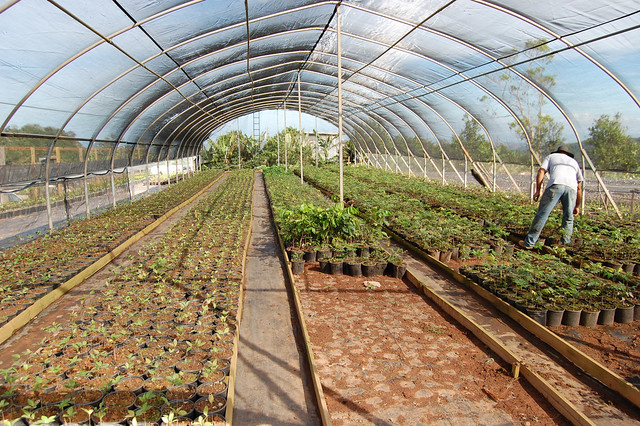
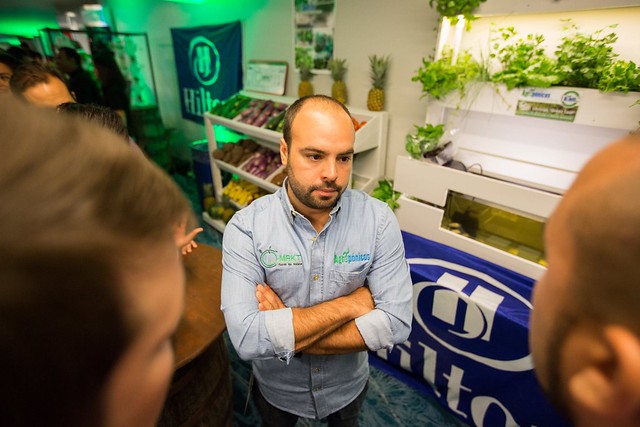
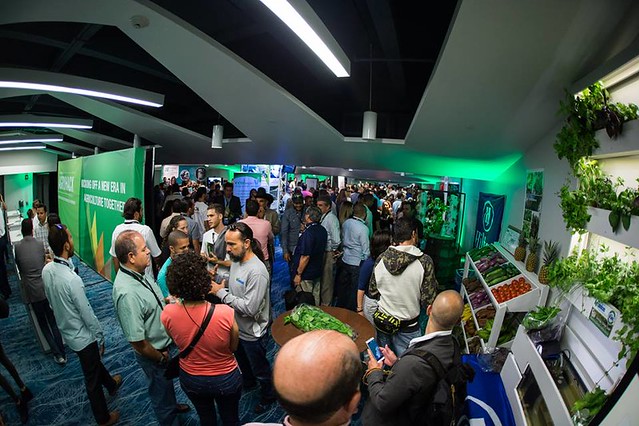

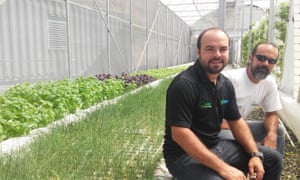
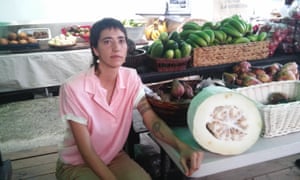
沒有留言:
張貼留言